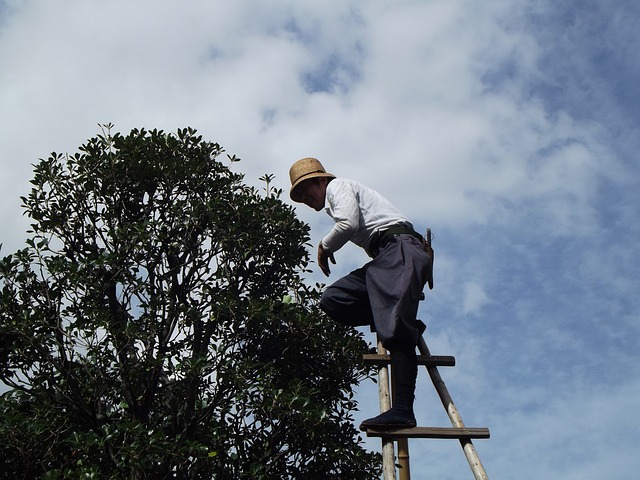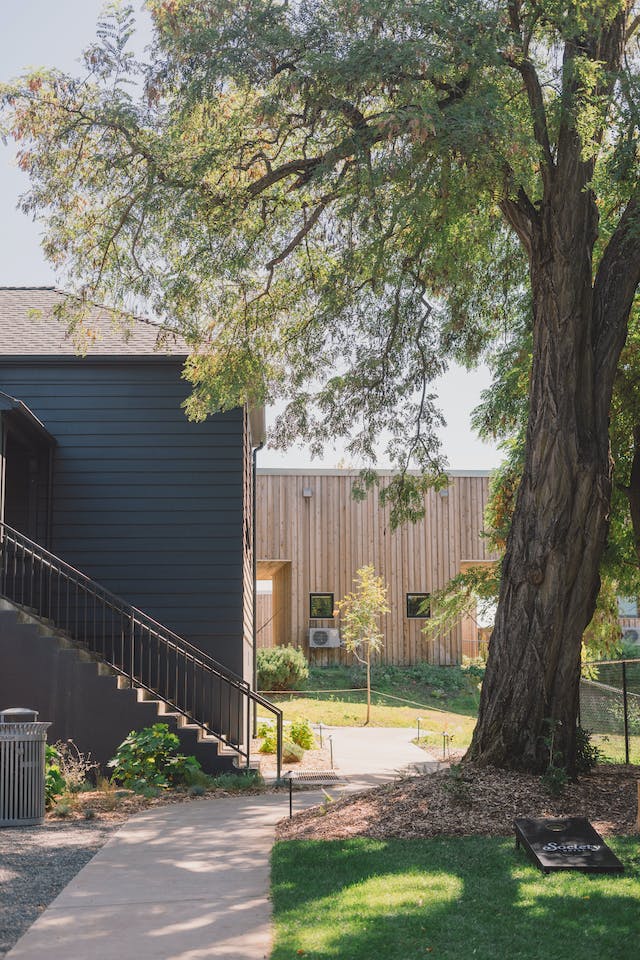Carpenter ants may appear benign while nesting in trees close to your home, but their presence can pose a grave threat to your house. These pests prey on weak and water-damaged wood, meaning some structures around your property could be at risk.
Understanding how to manage carpenter ant colonies in trees is vital, as these pests could potentially migrate from the tree into your residence, causing damage and compromising your home’s safety.
Take a look at our blog, where we’ll tell you how to kill carpenter ants in trees and how proof. Pest Control can lend a hand for challenging carpenter ant infestations!
How to Eliminate Carpenter Ants in Trees
While carpenter ants may need to feed on wood, they still excavate galleries through wooden structures to build their colonies. Over time, this activity can compromise the tree’s integrity, making it more vulnerable to damage and collapse, especially during severe weather conditions.
Taking proactive measures to address these colonies is crucial if you suspect carpenter ants in nearby trees. Using insecticidal baits explicitly designed for carpenter ants can be an effective strategy to kill carpenter ants in trees on your property.
These baits are formulated with slow-acting toxins that the ants transport back to their colonies. As the bait spreads through the colony, it can effectively eliminate the entire nest, including the queen, leading to colony collapse.
Additionally, targeted application of insecticides through tree injections or soil treatments around the tree’s base can effectively control and kill carpenter ants in trees throughout your yard. Tree injections involve directly applying insecticides into the tree’s vascular system, reaching the colony inside the tree. Soil treatments around the tree’s base create a barrier against the ants, preventing them from climbing up or down the tree.
However, always remember to follow the product’s instructions. While it’s vital to kill carpenter ants in trees around your home to prevent their further spread, ensure you understand how these products work and how they may affect the foliage.
When in doubt, we suggest you seek guidance from a pest control professional, like the trained technicians here at proof. Pest Control. We can assess the severity of your infestation, choose the appropriate treatment methods, and provide recommendations on the most effective insecticides to use.
Additional Methods to Kill Carpenter Ants in Trees
Apart from using insecticidal baits and targeted insecticide treatments, other effective strategies exist to prevent or kill carpenter ants in trees. Try out these options to further mitigate the risk of pesky carpenter ants:

- Tree Trimming and Removal: Start by inspecting trees around your property for signs of carpenter ant activity. Trim branches that touch your house, destroying bridges that allow ants to access your home. If a tree is heavily infested and poses a significant risk, consider consulting an arborist or removal service to remove the tree safely.
- Sealing and Repairing: After eliminating the carpenter ants in the tree, inspect your home for any potential entry points. Seal cracks, gaps, and openings could be ants’ access points. Repair and replace any damaged or moisture-damaged wood to discourage future infestations.
- Preventative Measures: Implement preventive measures to make your home less appealing to carpenter ants. Keep firewood away from the house, minimize moisture around the foundation, and trim vegetation away from the structure to reduce potential nesting sites and entry points.
Combining these strategies helps eliminate carpenter ants in trees and safeguards your home from potential infestations and structural damage caused by these pests.
Prompt Action: Key to Protecting Your Home from Carpenter Ants
But why is regular monitoring so important? Regular monitoring and maintenance play a crucial role in ensuring the long-term protection of your property. Even though these ants prefer to nest in damaged wood, they can still substantially threaten your home by infesting untreated lumber.

Conduct routine inspections of trees to spot signs of infestation, including sawdust-like debris, tiny openings in the bark, or ants. Identifying the issue in its early stages significantly improves the likelihood of successful eradication before the ants migrate into your home.
Delaying action against carpenter ants in trees can escalate the problem. These ants often branch out to establish larger colonies and explore for food sources, making the wood inside your home a prime target for their next colony. Once inside, they can cause damage to wooden structures, compromising the integrity of your home’s construction.
The cost of repairing structural damage caused by carpenter ants can be substantial. A carpenter ant infestation isn’t as costly as termites, but these pests can still accrue many expenses as you repair damaged and potentially rotting wood.
Save yourself the worry, and promptly eliminate or kill carpenter ants in trees before an infestation gets out of hand!
Seeking Professional Help for Carpenter Ant Infestations
Dealing with carpenter ant infestations in trees near your home can be challenging, requiring expertise and specialized techniques to eradicate these pests and protect your property. That’s why we advise turning to the experts!
Pest control professionals have the knowledge and experience to assess the infestation’s extent accurately. We can identify the species of ants involved, locate their nests, and devise a comprehensive plan to eliminate the colonies in trees safely and effectively.
Plus, pest control experts possess access to professional-grade products and treatments that are not readily available to consumers. Collaborating with pest control professionals also offers the advantage of receiving guidance on preventive measures and ongoing monitoring to prevent future infestations.
When you have a tough infestation, don’t hesitate to contact us! We’ll do the heavy lifting so you can enjoy your home pest-free.

